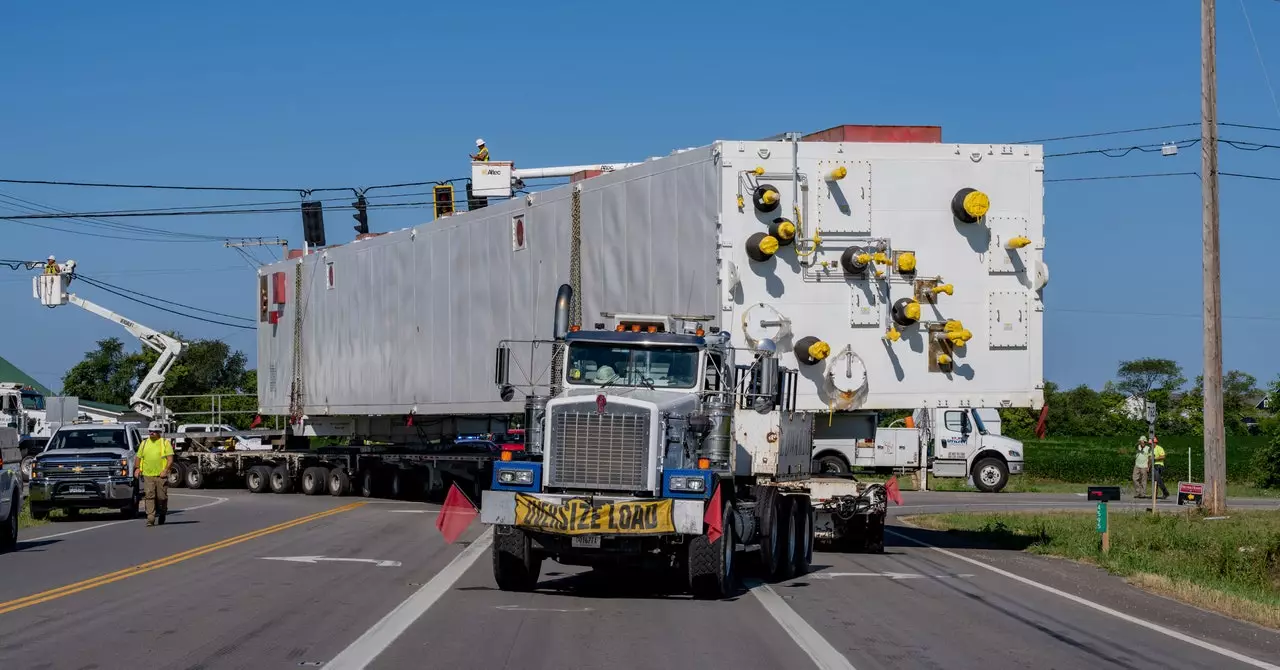In recent years, the logistics of transporting extremely heavy cargo—commonly known as “superloads”—has become a fascinating topic. Today, we delve into one such operation in Ohio, which combines the intricacies of logistics planning with the local community’s perspective. With a multitude of regulatory hurdles and physical challenges, these transportation feats are not just about moving substantial weights; they represent an intersection of technology, community engagement, and the potential future of semiconductor manufacturing. Among these operations is a massive cargo piece, a “cold box,” which exemplifies the challenges and efforts involved in moving superloads.
The object in question, referred to as a cold box, is an essential component of air separation units vital for microchip production. Standing at an astonishing 280 feet long and weighing nearly one million pounds, this apparatus plays a crucial role in the highly controlled cleanroom environment needed for semiconductor fabrication. The manufacturing process of microchips requires painstaking cleanliness; even minute particles can jeopardize production quality. The cold box facilitates the extraction of nitrogen from the air, which is then employed to eliminate any contaminants from manufacturing equipment—creating an ultra-pure environment necessary for microchip advancement.
The transport of the cold box from its production site in Europe, including its journey from the port in New Orleans to the site near Columbus, Ohio, required meticulous planning and coordination. In total, the project involved various stakeholders, including transportation contractors, local authorities, and utility companies—each playing a role in this ambitious endeavor, reflecting the deep complexities involved in moving come of the largest cargo ever seen on highways across the Midwest.
As the superload makes its way through Ohio, local residents have taken a keen interest in this mammoth operation. Community members often follow updates shared by the Ohio Department of Transportation on social media. Comments range from those offering baked goods to the transport crew to others voicing frustrations over traffic delays. This dual narrative of eagerness and annoyance illustrates how significant logistics undertakings can impact daily life.
One Ohioan, Emily Stone, affectionately nicknamed the “Load Chaser,” has made it her mission to witness these superload deliveries firsthand. Having grown up in a community shaped by heavy industry, her dedication signifies an intriguing blend of pride and nostalgia. The economic history of towns like Portsmouth, Ohio, is rich with manufacturing legacies from shoe-making to steel production, which brings an added layer of community rapport to these logistics operations.
Ohio’s past with heavy industry is multifaceted, with echoes of both pride and concern. For locals such as Stone, the superload is not merely an exciting spectacle but also linked to a narrative of economic transition and environmental implications. The region carries memories of a rich industrial past, including uranium enrichment activities that have left lasting health concerns. The legacy of these industries has created a complicated relationship with future industrial endeavors, leaving many residents feeling that their voices regarding community responsibility and accountability remain unheard.
As the transport breaks new ground in heavy haul logistics, so too does it bring forth conversations about transparency and corporate conduct. With every cold box that moves through town, stories emerge—of ambition, potential hazards, and a community whose scars remind them about the price of industrial pursuits.
As megaprojects like Intel’s semiconductor plant bring transformative economic prospects, the role of transporting superloads continues to gain prominence. These operations are not simply logistical undertakings; they are integral threads in the fabric of local history, economy, and community identity. Each expedition, such as the delivery of the cold box in Ohio, serves to highlight the Triad of technology, community perspectives, and the legacy of industry, shaping not only the landscape but also the narrative of the communities involved. As America invests in semiconductor manufacturing in response to global competition, the importance of such logistics operations cannot be understated—taking us into a future where innovation and local impact converge.


Leave a Reply